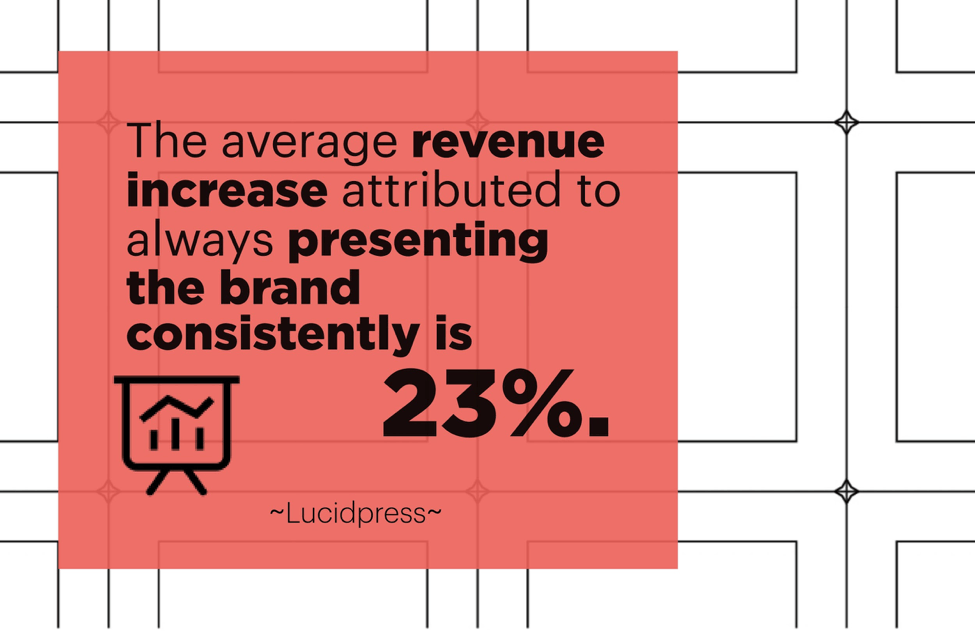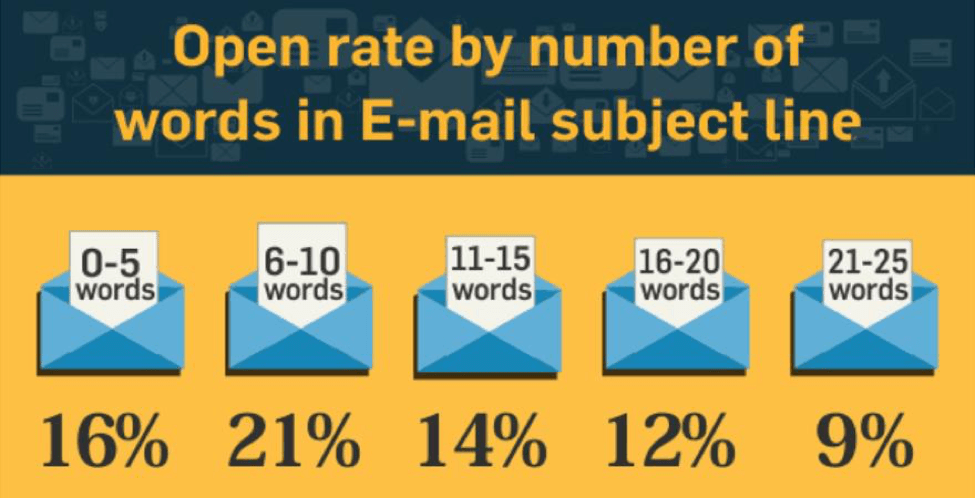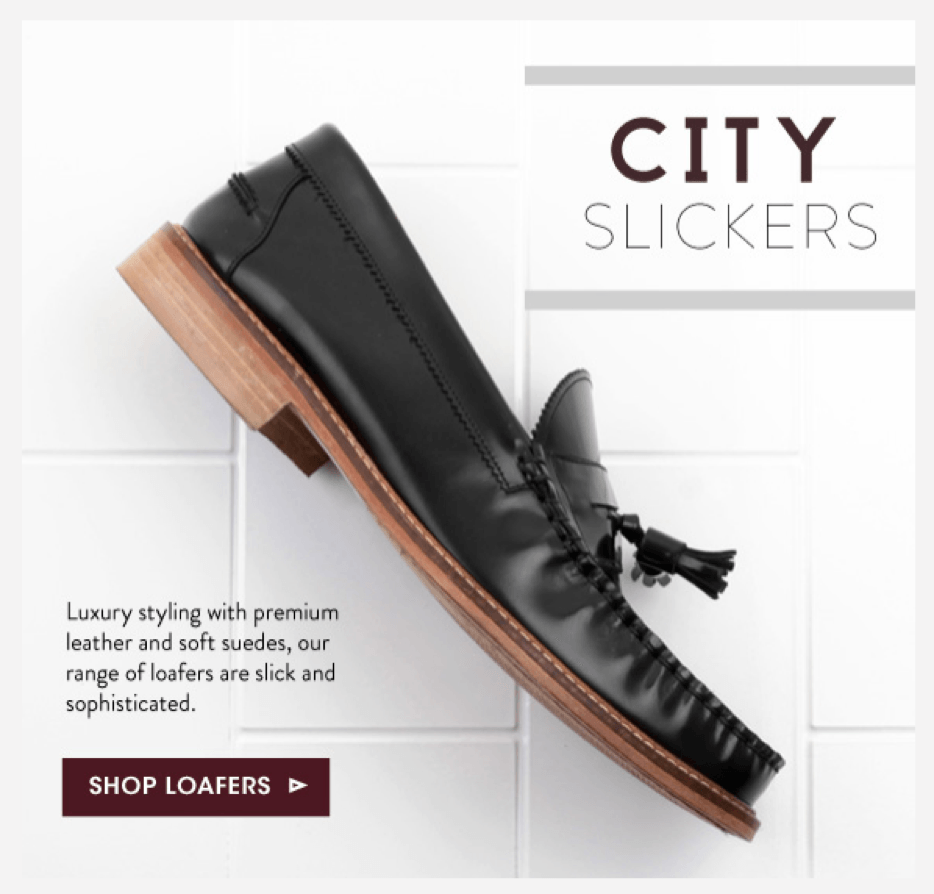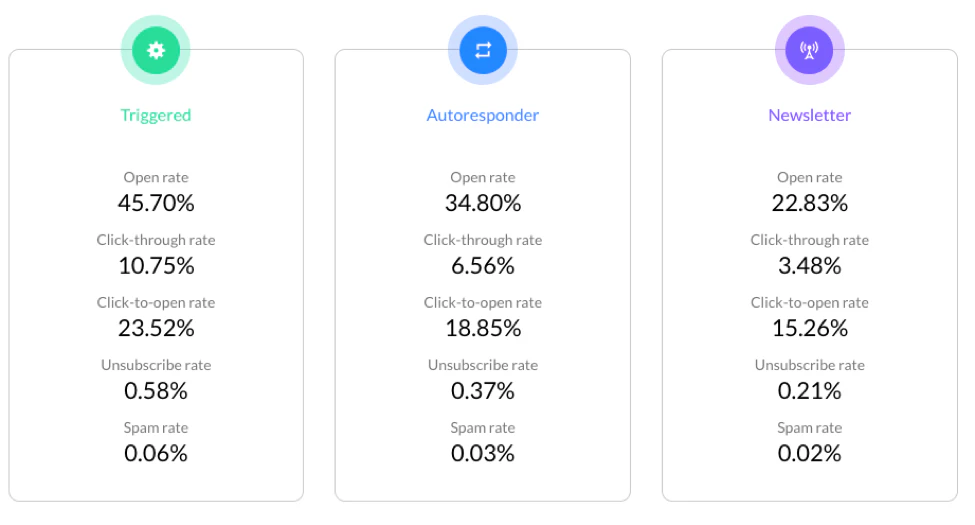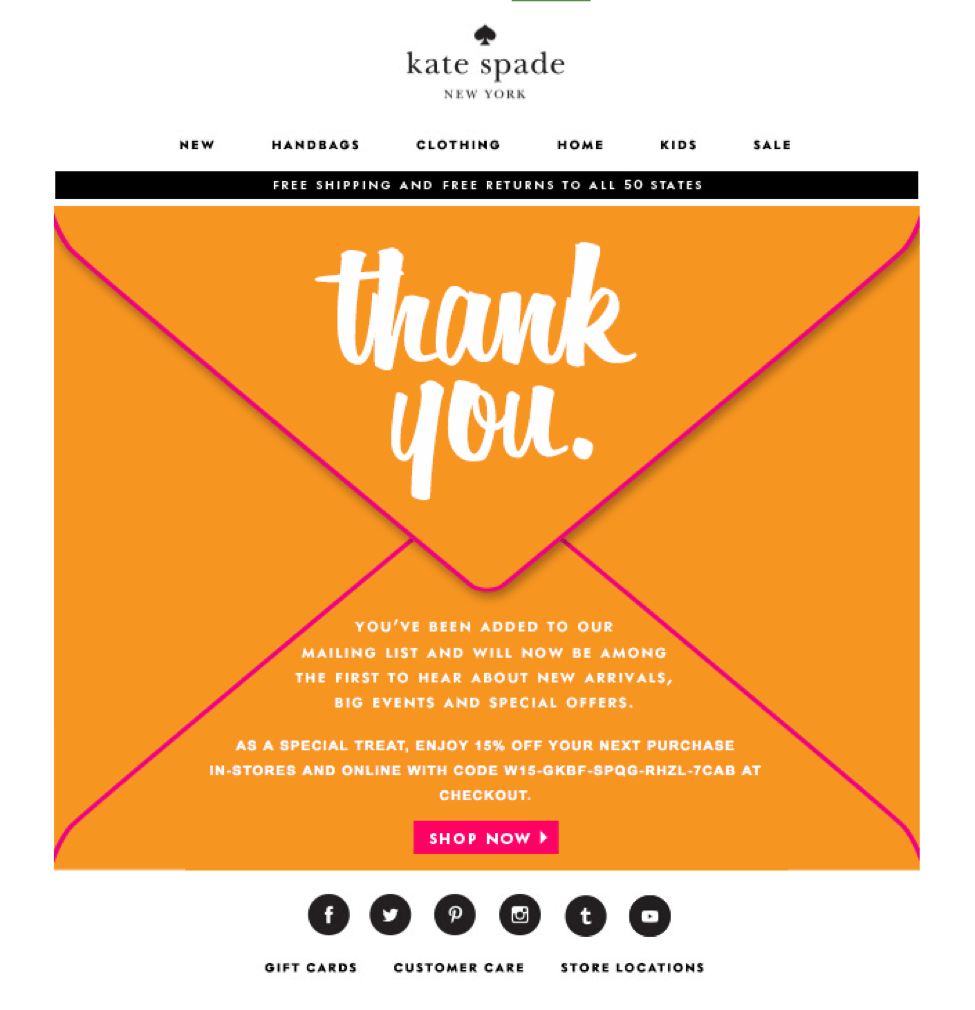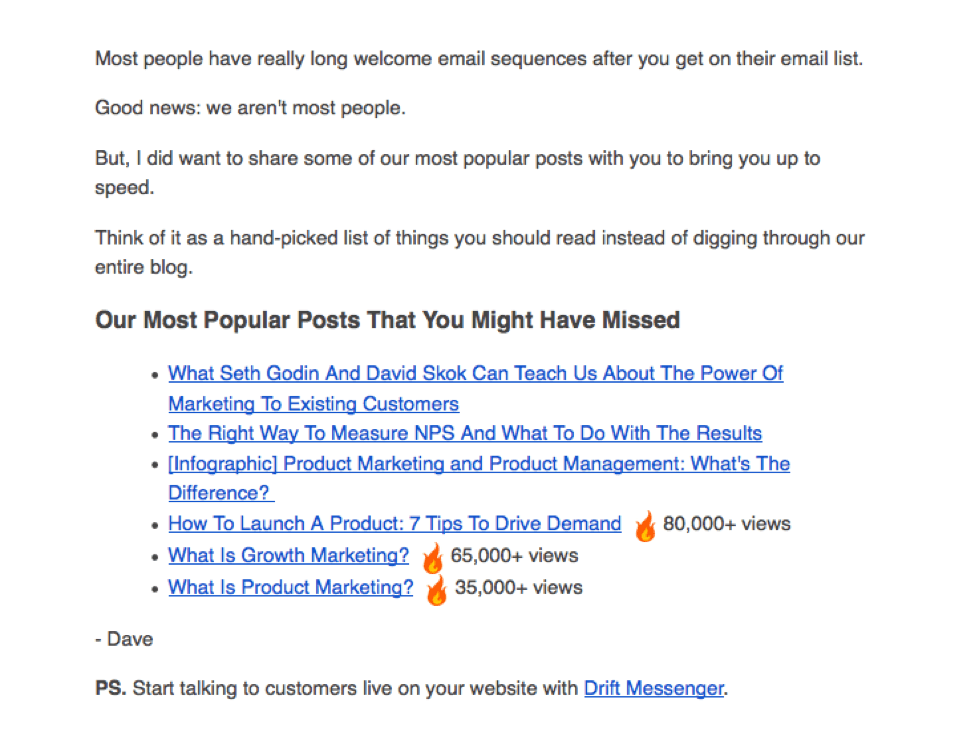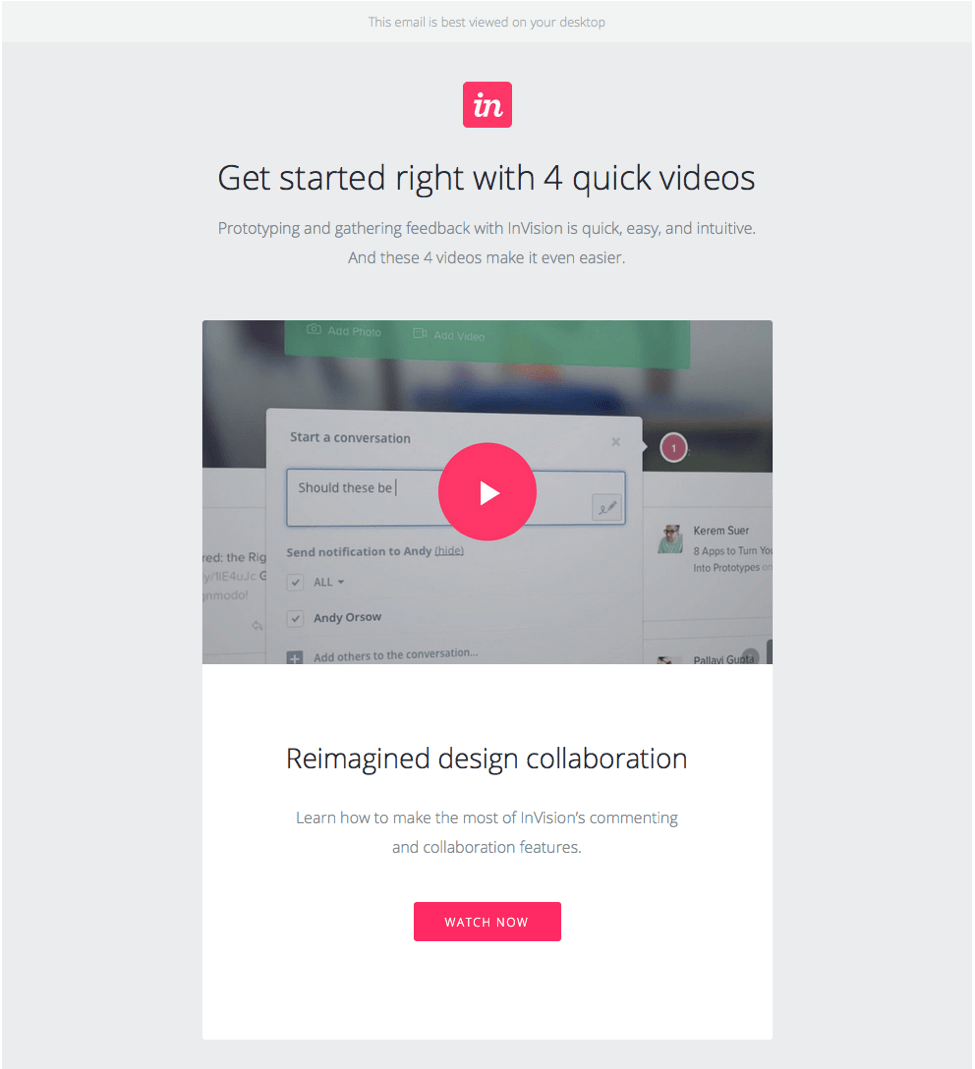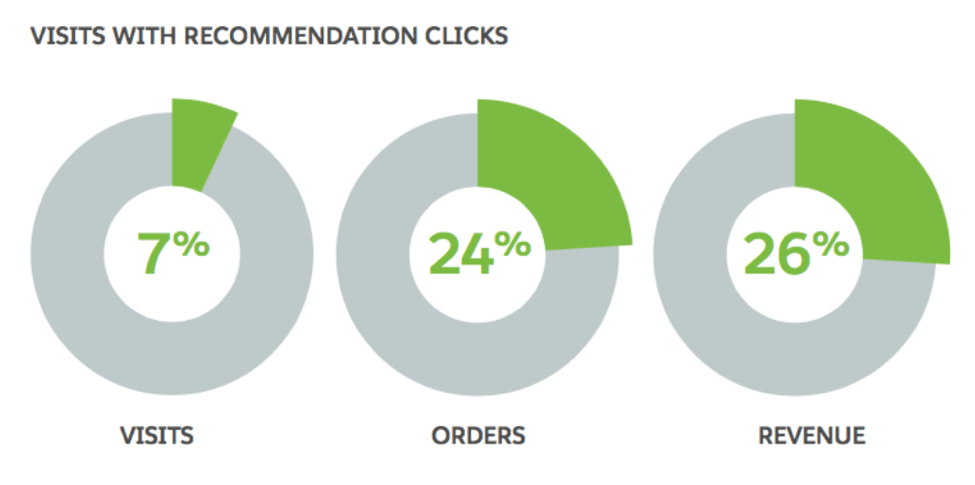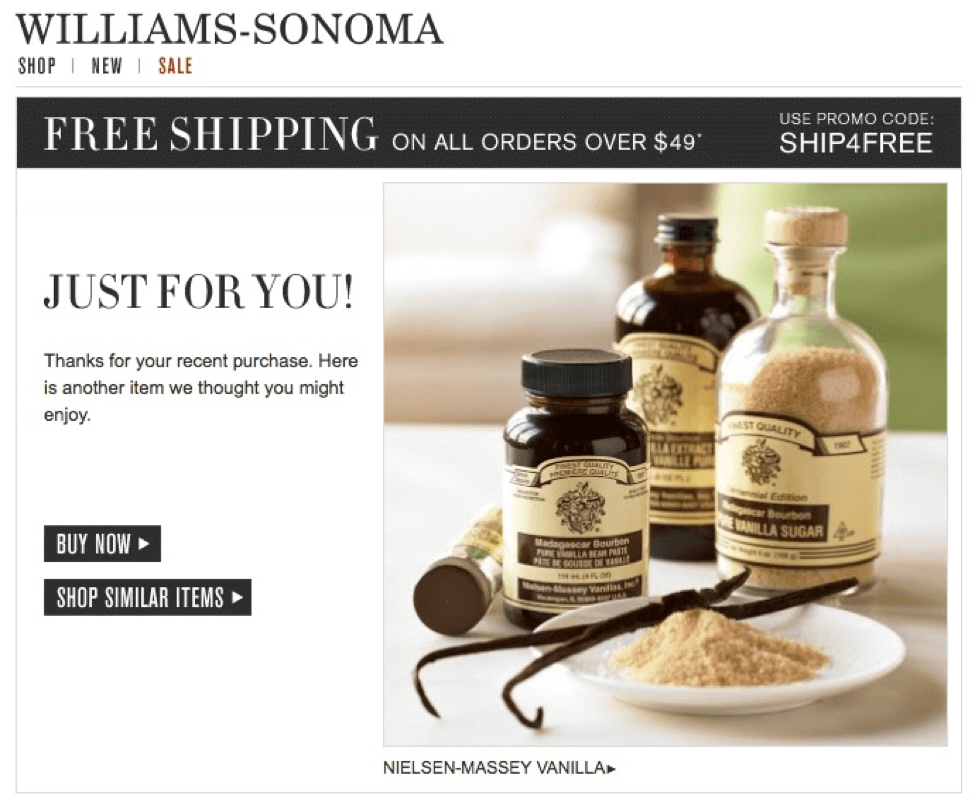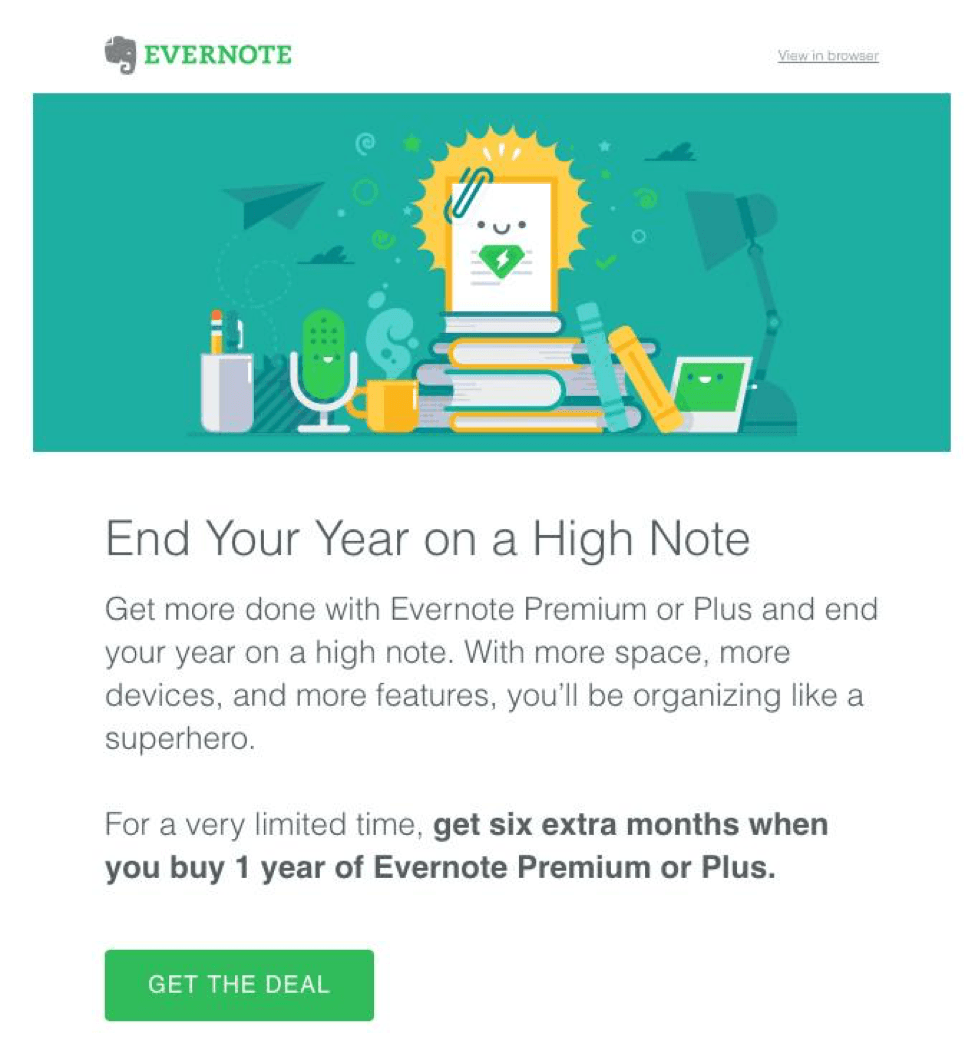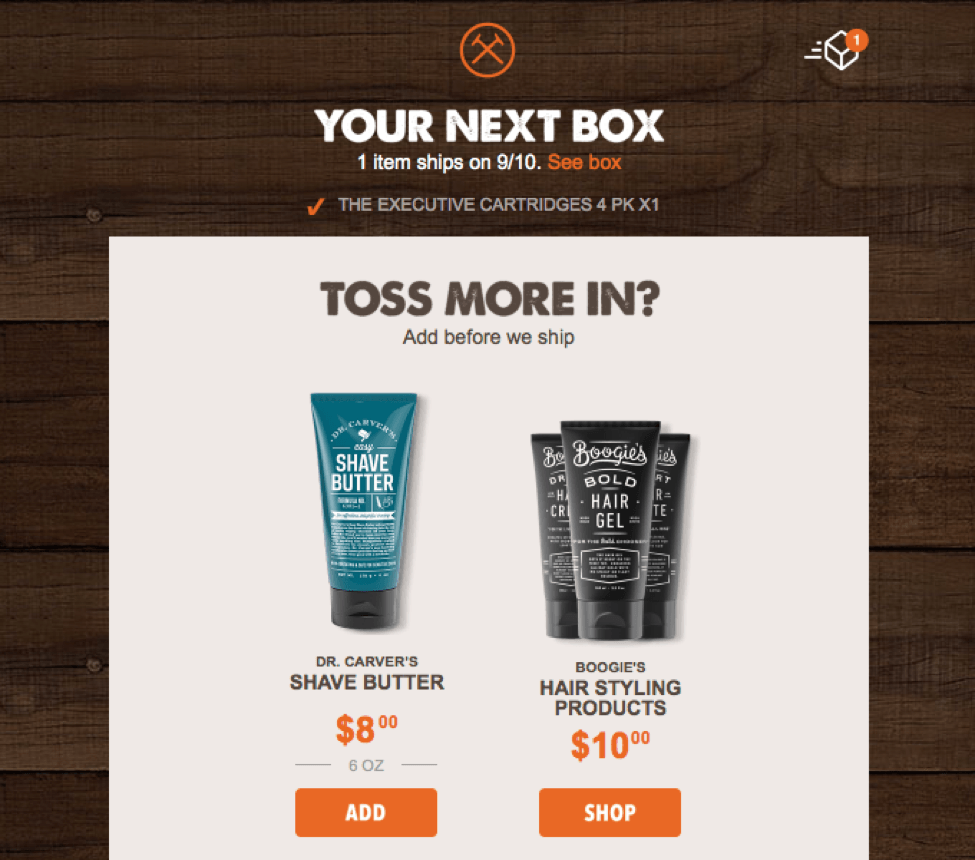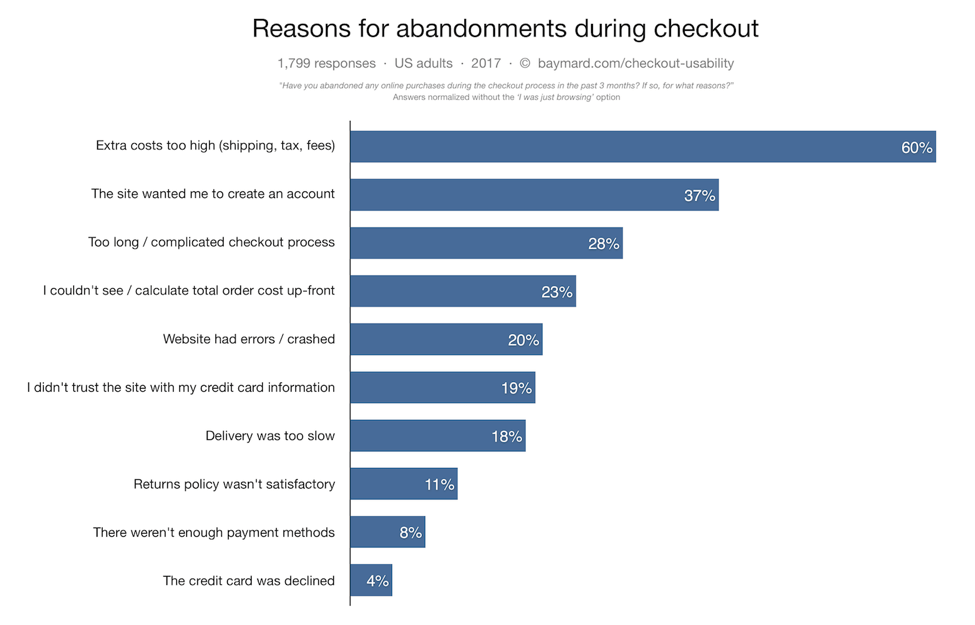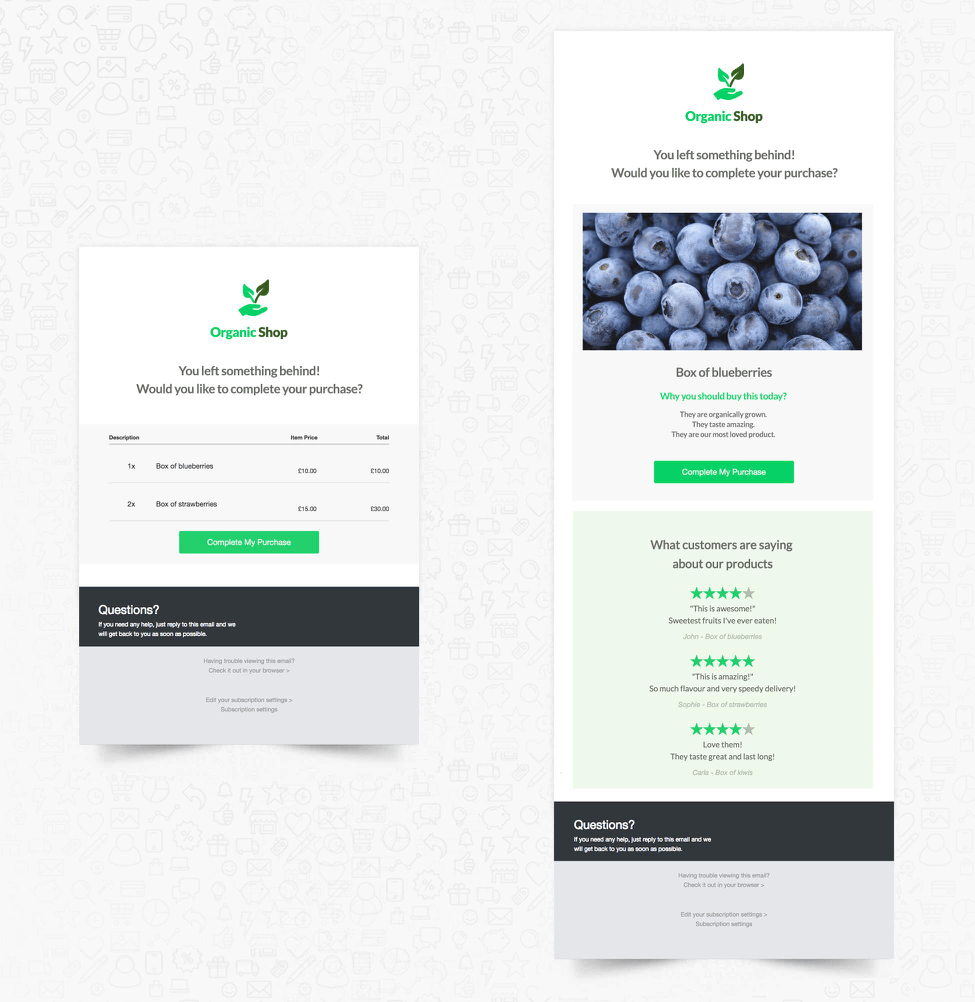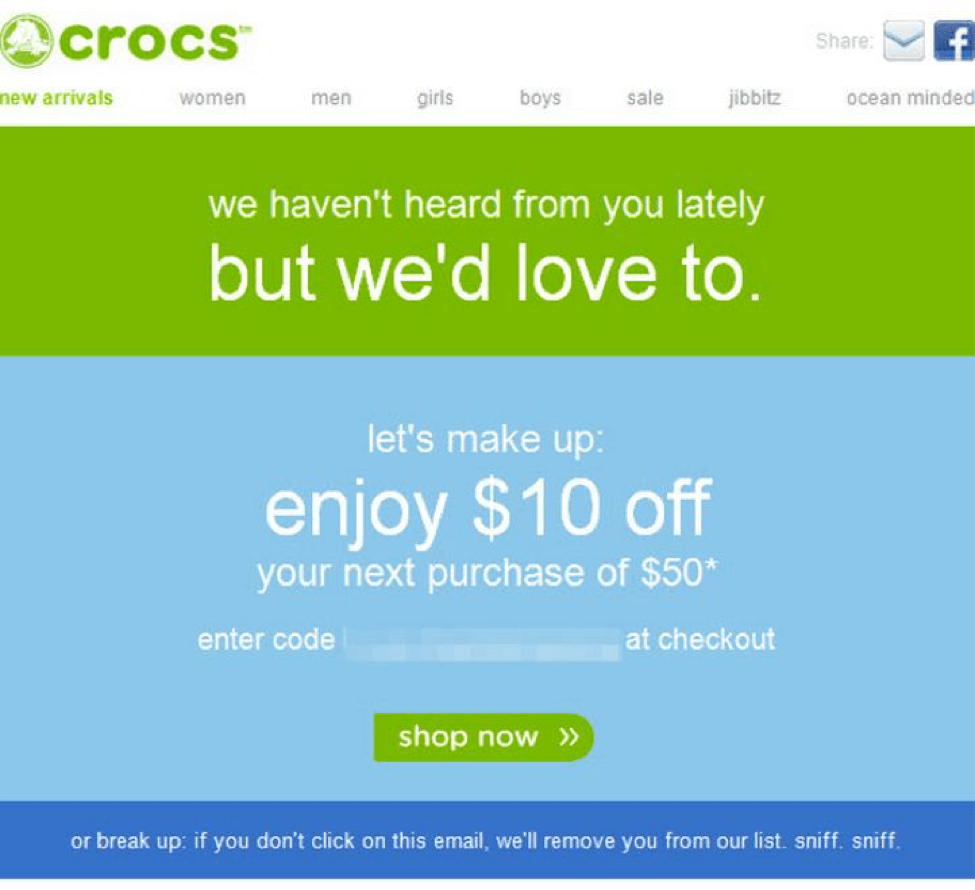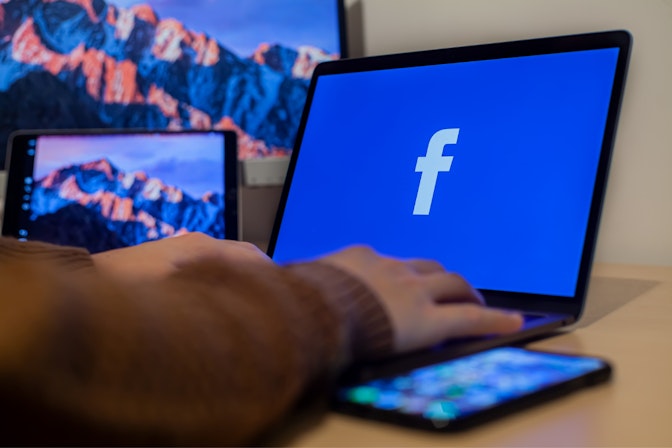We know that email marketing is one of the most powerful ways you can reach your customers. But what does it take to craft a perfect email that invites a flood of opens, clicks and conversions? In this article I’ll be breaking down the anatomy of a killer email, from creating convincing subject lines to personalization tactics that don’t get too personal. Plus, I’ll also be sharing some best-in-class email marketing examples that you can use as inspiration for your own campaigns.
Ready to get into it? Let’s go.
Post Contents
- Step 1: Create Memorable Content
- Types of Marketing Emails
- Conclusion
- Table of Contents



Step 1: Create Memorable Content
The #1 ingredient for a killer email is interesting, relevant, and engaging content.
There’s no way around it: bad content will get bad engagement.
Take the time to really look at the unique value that each of your emails will offer, and how well you’re communicating that value and captivating the reader.
→ Click Here to Launch Your Online Business with Shopify
As you do this, make sure that each email’s voice and tone supports your brand and ethos. Consistency and authenticity are key, especially in an age where brand identity can make or break your business.
A Lucidpress study shows that companies saw a 23% increase in average revenue when they presented their brand consistently.
Once you have this framework in mind, you’re set up to focus on the key elements of building a good email: the subject line, body content, and call-to-action (CTA).
Let’s look at some best practices for email marketing design as it relates to content and layout.
Email Subject Lines That Convert
Think about that feeling you get when you’re checking a full inbox first thing in the morning. You skim through the sea of email subject lines, figuring out which ones are the priority and which ones will go straight to the trash.
Some argue that your subject line is the most important element of your email – and therefore one of the top tips for
marketing content – because that’s how people will decide if they want to bother opening it in the first place.
One study shows that 47% of email recipients will decide to open based on the subject line alone, and 68% will use subject line as the only factor in deciding when to report an email as spam. Yikes.
And subject lines are especially important in the earlier stages of the customer’s lifecycle, when they haven’t yet built trust and loyalty for your brand.
So how do you ensure that you’re capturing your reader’s attention?
Here are a few basic tips for email marketing subject lines.
1. Tell them just enough
There’s a sweet spot: you want to tell them what’s inside the email, but don’t overdo it. Too many words risk diluting your message and getting cut off in their inbox preview. One study suggests that about 6-10 words is this sweet spot with a 21% open rate, as opposed to a 16% open rate for 0-5 words, and a 14% open rate for 11-15 words.
Of course, this isn’t a hard rule, so don’t overthink the word count. The key is to be straightforward and honest about the content while still being concise and interesting.
Here are some examples of good email marketing subject lines that hit the sweet spot:
- Ready for summer? So are we – See our new swimwear line
- Join Our Loyalty Program to Get an Extra 10% Off
- Get more kitchen space with these 5 quick fixes
2. Make them feel special
Going back to the theme of personalization, make your readers feel appreciated. Use their name, tell them they’re a valued customer, give them “exclusive” access, “sneak peeks,” and special privileges.
Examples of good email marketing subject lines to make them feel warm and fuzzy:
- We’re so glad you joined us, Nicole
- Members Only: Access Our Cyber Monday Deals 24 Hours Early!
- Xavier, your private invitation expires tomorrow.
3. Show your brand’s personality
Like I mentioned earlier, consistency is key. If your brand is quirky, don’t be afraid to show it! Be self-aware, light-hearted, and crack a joke or pun if that’s your style.
Examples of good email marketing subject lines that keep it fun:
- Are you breaking up with us? Say it ain’t so…
- Woohoo, Your Order Has Shipped!
- 5 authentic Indian food recipes for naan-believers
4. Create a sense of urgency and personal investment
I don’t recommend to always create a sense of urgency, but it can be a great motivator when the time is right. For example, time-sensitive offers, events, and reminders can get people off their butts and bump you up their priority list.
Additionally, try appealing to their sense of accountability for themselves and their goals. For example, email marketing tips for B2B (business-to-business) companies might include asking a compelling question to get a business owner thinking about their customers or their company’s performance.
Examples of good email marketing subject lines that motivate and inspire:
- Armando, your prescription is expiring. Time for new contact lenses?
- Final Notice: Buy One, Get One on Mother’s Day Bouquets!
- Are you avoiding these common customer service pitfalls?
5. DON’T GO CRAZY WITH CAPS, emojis 😱💩🙅🏻 or punctuation!!!
I don’t know about you, but to me, caps = yelling. Don’t yell at your recipients. It might feel like you’re standing out and getting their attention, but you’re probably just annoying them. Same goes for excessive punctuation.
As for using emojis and special characters, that’s a matter of preference and catering to your audience’s natural communication style. Experian found that subject lines with symbols got an impressive 56% higher unique open rate, so they’re definitely something to consider. That said, don’t overdo it.
Here are some bad email marketing examples when it comes to being obnoxious:
- ONE-DAY ONLY SALE!!
- Caitlin, Don’t You Want Your FREE Personalized Tote?!
- 🌟We know you’ll love 😍 this deal like we do 🙌🏻🎉💯
Putting it all together, take a look at some of the great subject lines from Ramit Sethi, New York Times best-selling author of “I Will Teach You How to Be Rich.”
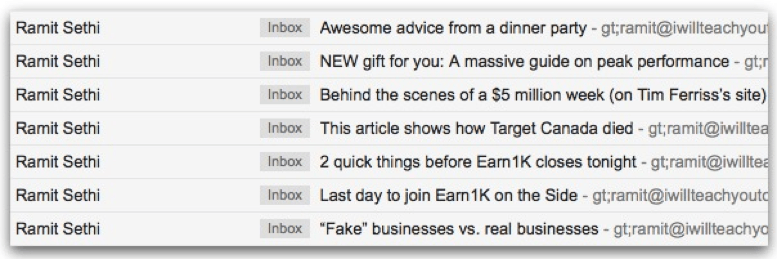
Email Body Content: Layout, Copy, and Visuals
There are no hard-and-fast rules for what a good email looks like. Some brands like fancy, stylish designs while others just use plain text and hyperlinks. This is all up to you, and it’s an important part of telling your brand’s story and building visual recognition.
But there are some basic email marketing design tips that you should keep in mind. We made a handy dos and don’ts chart that highlights key qualities that high-converting email marketing templates tend to have in common.
Our chart looks at 3 important elements of your body content: layout, copy, and visuals.
Keep these dos and don’ts in mind as you read this whole ebook. These points will be a recurring theme as we look at examples and best practices in email marketing.
| DOs | DON’Ts | |
| Layout | • Use the inverted pyramid model: attention-grabbing headline with your main focus, supporting info, then CTA
• Create a visual hierarchy, like headings and subheadings, and different colors and font styles • White space is your friend – use it often to create a visual balance and direct flow down to your CTA |
• Don’t write big blocks of text – instead, aim to make it skimmable and easy to digest
• Don’t overwhelm with too many colors and font styles – aim for 2-3 and make sure they match your branding • Don’t make emails too wide, or they’ll be hard to read – about 600 pixels wide will do the trick |
| Copy | • Keep it short and sweet, with each word supporting and relevant to your main focus
• Write clearly and conversationally – use language that’s helpful, descriptive, and actionable • Hyperlink to everything that’s applicable to bring them back to your website or landing pages |
• Don’t send the same generic message to everyone
• Don’t use technical or complicated words – write as simply as possible so no one has trouble understanding • Don’t focus too much on features of your product or service – instead, show them the benefits and impact |
| Visuals | • Include visuals that are relevant and eye-catching, while adding real value to the message
• Format and resize images so that they’re not distorted or blurry when you put them in your template • Remember: there is such a thing as too many images, which might distract from your CTA |
• Don’t include visuals just because you feel like you need to – simplicity is a virtue
• Don’t just use photos – have fun with other types of media like videos, GIFs, and illustrations • Don’t use massive media files, which will take longer to load and lose readers’ attention |
CTAs and Buttons
A call-to-action (CTA) is what you want the user to do after reading your email. You can think of it as the ultimate goal or reason you’re sending the email to begin with. This could be asking them to use a discount, check out a new product, read your newest blog post… pretty much anything you can think of.
The CTA is usually displayed as a button that leads the reader to a webpage (called a landing page) where they can complete this action.
One of the best email marketing call-to-action tips is to focus on a single CTA in each email. By giving one clear instruction, there’s less distraction – which means more action.
Home appliance company Whirlpool learned this first hand. They decreased their CTAs from 4 down to 1 and saw a 42% increase in clicks.
If you can’t manage just one CTA, choose a primary and secondary.
Beware of having more than 2 CTAs, because data shows that this will dilute the message and can ultimately lower your engagement rates, as well as the overall performance of your campaigns.
Email Marketing Examples: Call-to-Action
This email marketing example from City Slickers wants readers to shop for loafers. They’ve made it simple and perfectly clear with their “Shop Loafers” CTA button.
Airtable includes a straight-forward “Browse the gallery” CTA button to direct customers to their company’s template gallery.
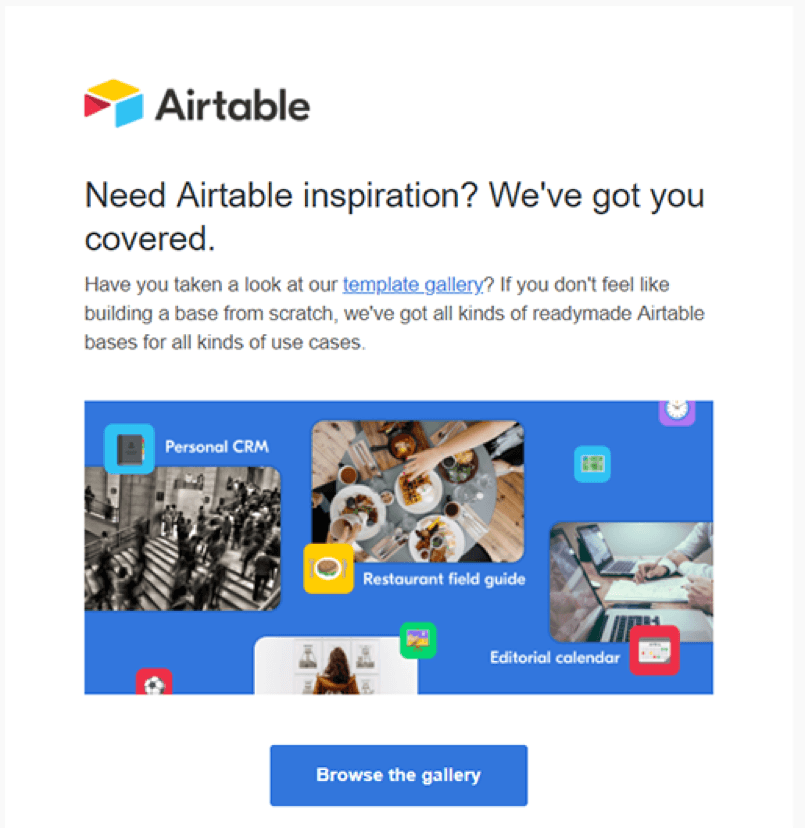
BuzzSumo keeps it super simple, with minimal design and visuals to promote their platform’s Reddit engagement data. This draws even more attention to their “Subscribe Now!” CTA button. As an added bonus, their custom graphic shows the BuzzSumo mascot hanging out with the Reddit mascot to further illustrate the partnership. Good stuff.
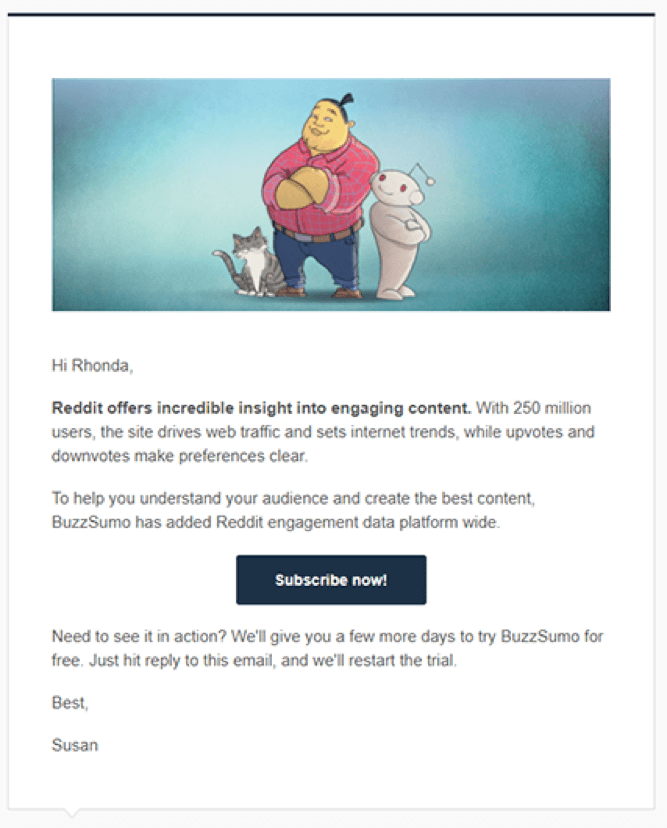
Now that you have an idea of the individual elements that make a great email, let’s look at some lifecycle email marketing examples that help turn separate emails into full campaigns.
Types of Marketing Emails
The exciting part about email marketing is that you’re only limited to your imagination. While you should definitely watch and learn from the top email marketing examples out there, I strongly encourage you to get creative with your ideas, offers, and engagement strategies.
That said, we should start at the beginning. The best path to success is building your strategy around email marketing tips that actually work.
That’s why I can’t stress enough that you must personalize each user’s experience. This means that you’ll need to segment your list based on specific user details like their demographics and what they do on your website. Then send emails that cater to those details.
Data shows that triggered and autoresponder emails (including welcome and transactional emails) get higher open rates and engagement rates than your standard newsletter.
That’s because these types of emails are a direct response to a recipient’s unique behaviors and actions (which you’ll accomplish through segmentation). This shows the recipient that you really “get” them, and that you’re just as invested in their satisfaction as they are.
Let’s look at these simple email marketing examples to help personalize your messaging and nurture relationships with prospects and customers:
- Welcome emails
- Transactional emails
- Personalized recommendations
- Abandoned cart emails
- Customer loyalty emails
- Win-back emails
- Promotional and informational emails
For each type of email, we’ll go over the basics, as well as some more advanced tactics. These will include things like creating a related email series, and unique strategies to set yourself apart from competitors.
Automation and Creating an Email Series
I’ve said it before and I’ll say it again: automation is a must-have. When you invest in an all-in-one email marketing automation platform, you can send the right emails at the right time with just a few clicks.
An email series (also called a campaign) includes several automated and triggered emails that are sent over the course of several days, weeks, or even months. They can vary greatly because it all depends on your goals and how your customers interact with your brand.
Common types of email series include a welcome series, cart abandonment series, and win-back series (also called re-engagement series). Stay tuned for details on each.
Email Marketing Frequency Tips
When you’re prioritizing your email marketing best practices, frequency should be at the top of your list. Whether it’s a broad campaign or a specific type of email series, be sure that you’re not overwhelming your customers with too many emails. This can damage your reputation and the customer’s trust in your brand.
Throughout this article I’ll discuss a few options to help make sure you’re sending just the right amount of emails. These techniques include segmentation, mapping out email flows for your primary segments, and consolidating as much as possible into one app or platform.
Welcome Emails
Research shows that sending a welcome email has brought businesses an incredible 320% more revenue per email than standard bulk emails. Plus, welcome emails boast a far, far better open rate than standard ones. It’s a simple email marketing tip, but it packs a huge punch.
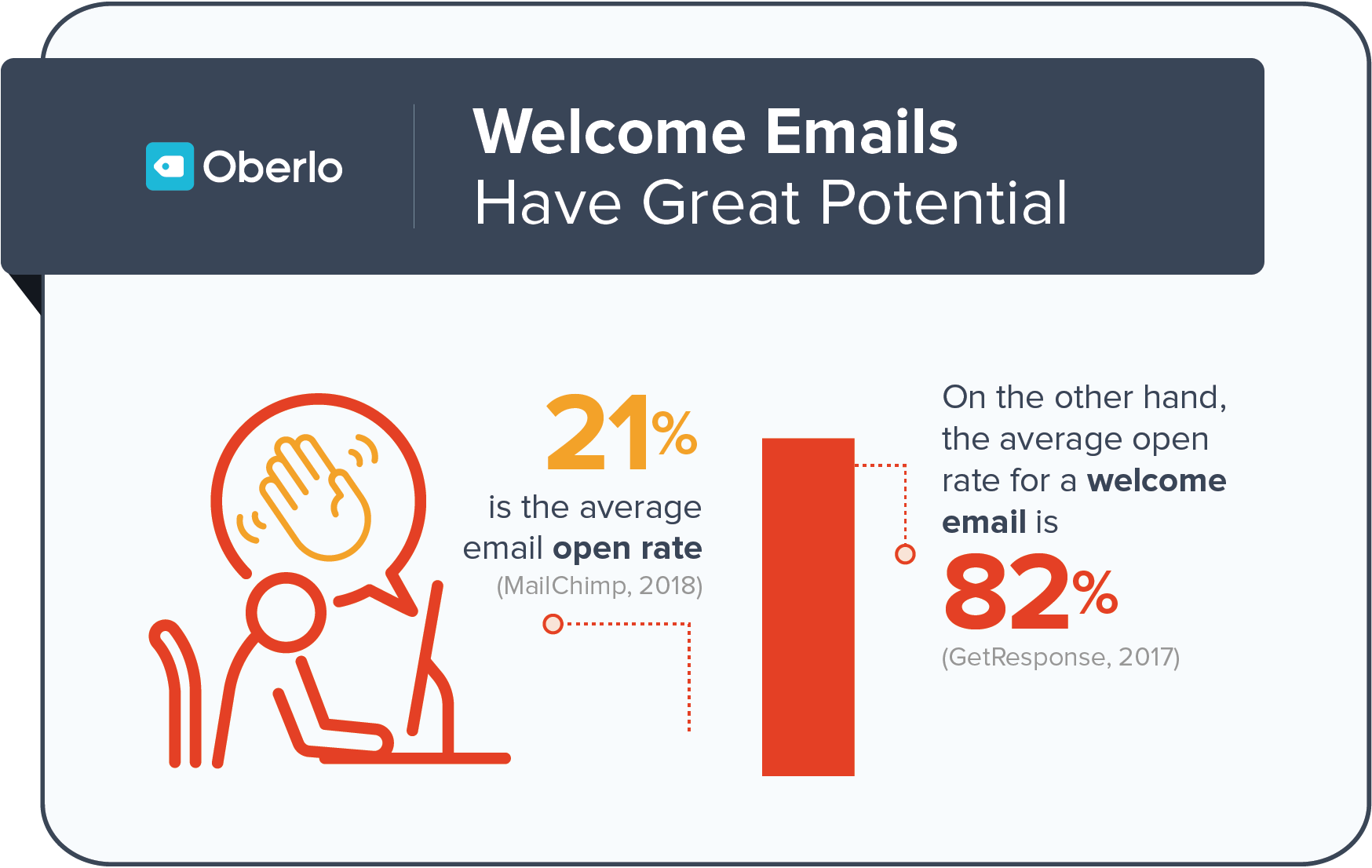
Welcome emails are generally the first message you send after you receive someone’s email address. They can be sent after a user takes an action like:
- Signing up for your newsletter
- Creating an account on your website
- Joining a club, program, or utilizing another incentive
- Making their first purchase
It can be a single email or a welcome series.
In this first contact, aim for a specific call-to-action (CTA). For many ecommerce stores, this takes the form of a special discount or promotion. In this welcome email, fashion retailer Kate Spade offers a discount code for 15% off an online or in-store purchase.
If you’re not an ecommerce brand (or you’re just not ready to shell out a discount yet), you can try a different approach. Tell them about a program or offering that makes your brand unique, or direct them to some great content.
Drift, a conversational marketing platform, takes a super minimalist – and very self-aware – approach, with a simple list of their most popular blog posts and a quick promotion of one of the platform’s features.
InVision, a digital product design platform, directs users to some tutorial videos to help them get started with the platform.
Welcome Series Tips
Say a customer just made their first purchase. A welcome series could have these 4 emails:
- 1–3 hours after purchase: Introduction. Showcase your company, team, and what you’re all about. You can even give behind-the-scenes info and photos to make it more personal.
- 3–5 days: Social discovery. Build on your intro email and show the customer how to connect with your brand online – whether that’s social media, your blog, or other channels.
- 2 weeks: Product discovery. Shift the message from your brand story to your top offerings. Show off your brand and why people love you. You can also make personalized product recommendations for items related to their purchase (more on this soon).
- 3–4 weeks: Incentive email. Send a discount or other incentive to encourage their second purchase if they haven’t made one yet.
Transactional Emails
Like the name suggests, you’d send a transactional email after a transaction occurs. They’re typically one-off emails instead of a series or campaign.
One of the most popular types of transactional ecommerce emails is when a company sends an order confirmation and purchase receipt after someone buys a product on their website.
The subject line of these emails is typically straightforward like “Purchase Confirmation” or “We’ve received your order.” The email body gives main order details, like:
- Confirmation or order number
- Date purchased
- What exactly was purchased
- Cost of items and total paid
- Payment method
- If there’s a delivery, a note about the arrival
- Shipment tracking number, if possible
Here’s an email marketing example from 1800-Flowers that shows the details of a transactional email:
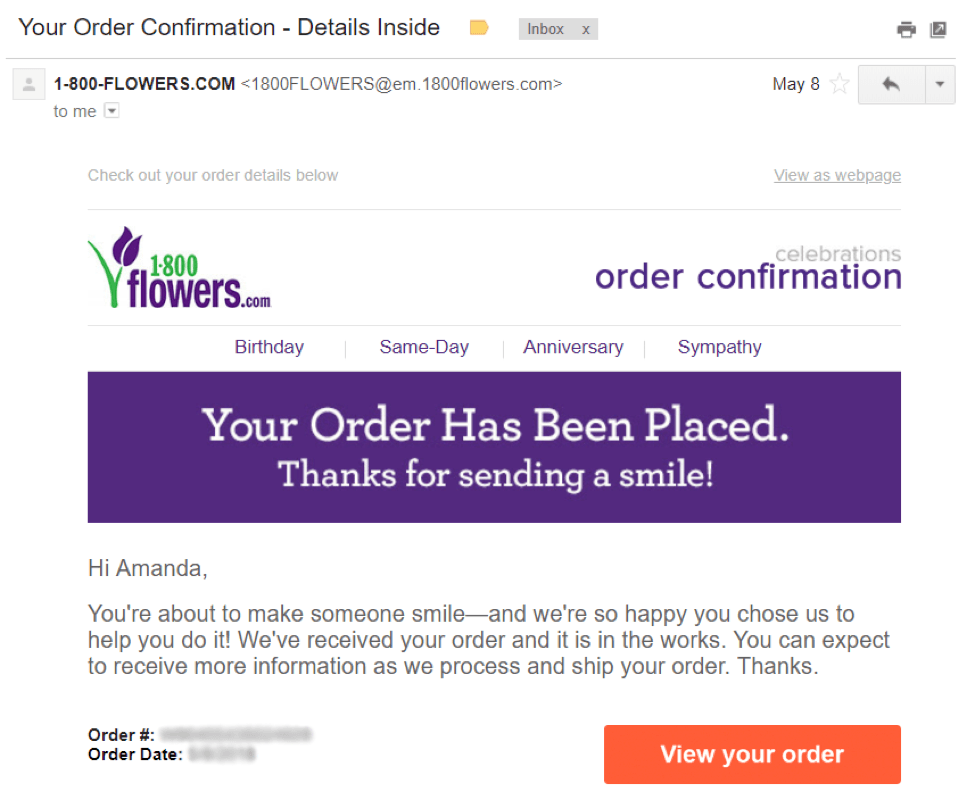
Other transactional emails can include:
- Welcome emails (which we discussed above), since signing up for a newsletter or making a purchase are considered transactions
- Download confirmation, similar to how a purchase confirmation works
- Password reset emails, sent to a user after they request to change their account password
- App or website extension emails, which reinforce actions from the app or website (for example, when you get a LinkedIn email to confirm a connection request from the platform)
- Surveys or requests for feedback based on a purchase, going to an event, or other experiences the user had with the brand
These are considered triggered emails, because they’re automatically triggered by a specific action from the user.
Technically, any email can be considered a triggered email if you set up your email marketing platform to automatically send an email based on an event (like an abandoned cart email, for example).
Here’s a simple survey and feedback request from the airline AirAsia, sent the day after a customer’s flight. It provides a clickable 1-10 rating scale:
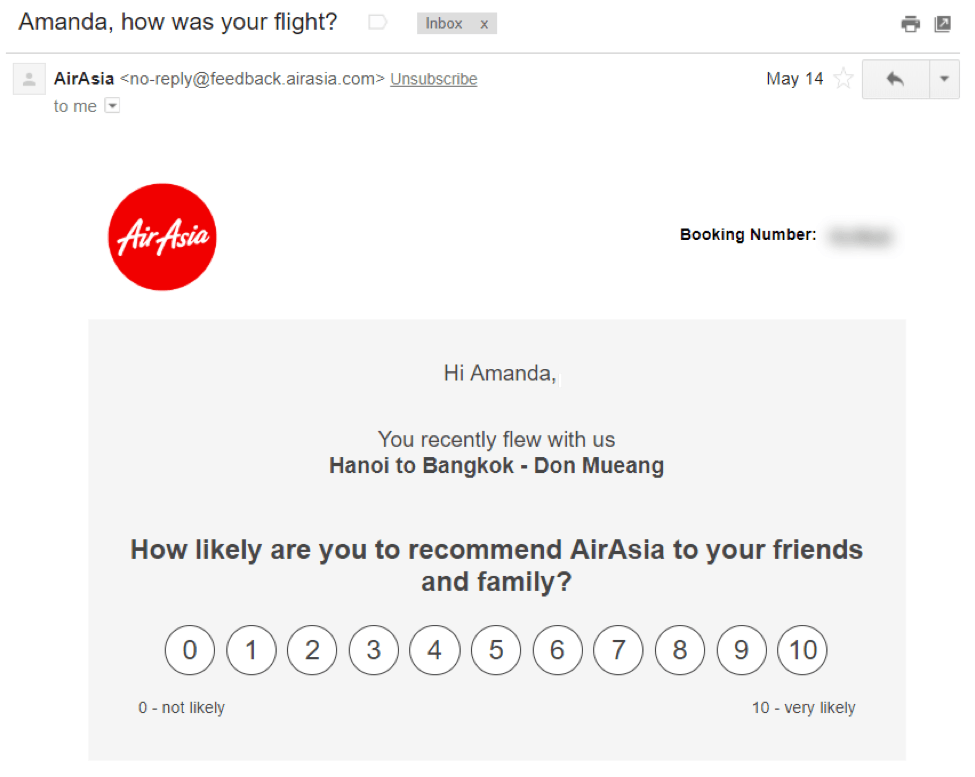
Then, when the customer clicks a number, they’re taken to a landing page where they have the opportunity to write extra feedback. They have 4 comment choices: suggestion, complaint, compliment, or other.
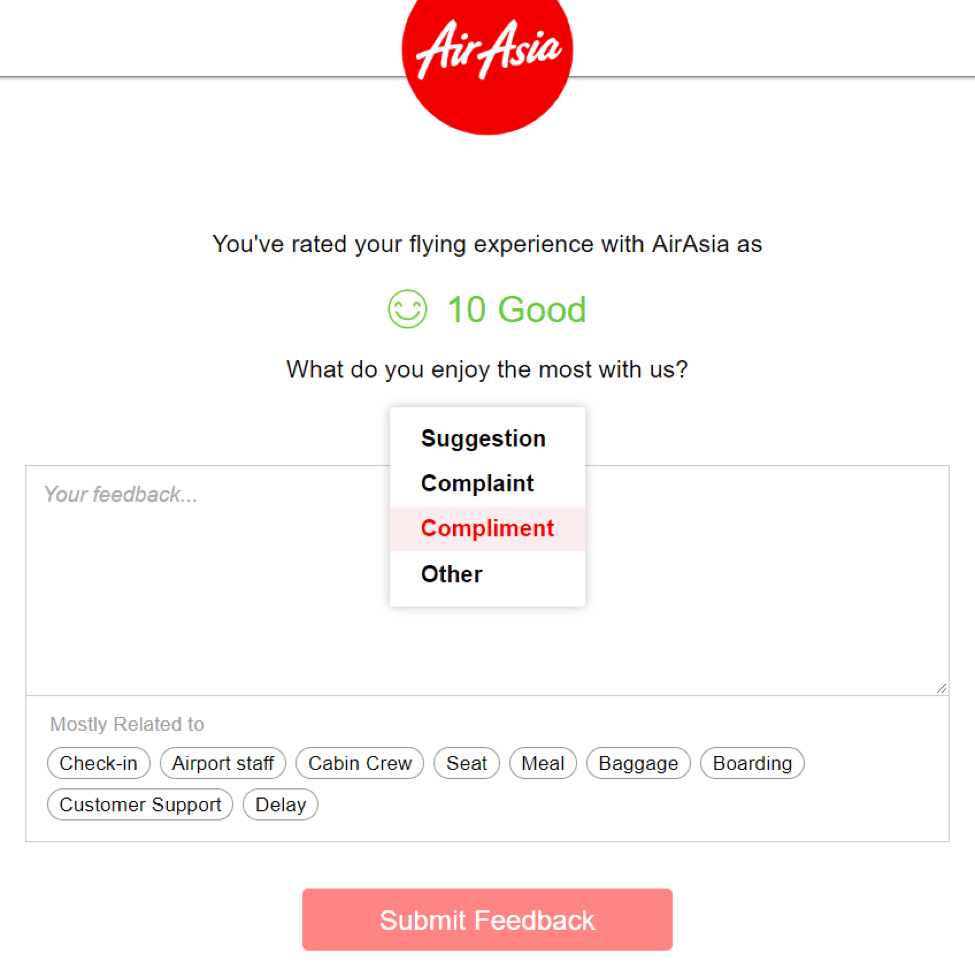
This is an excellent email marketing example of a brand using a transactional message to be attentive and caring toward its customers in a fast and easy way. At the same time, it’s gathering information to improve the company’s performance.
In unfortunate cases of disgruntled customers, this feedback gives valuable opportunities to identify who they are, why they’re upset, and how the company can repair the relationship and bring them back for future business.
Everyone wins.
Personalized Recommendations
Personalized recommendations are among the best email marketing tips to increase sales. I recommend including some type of personalized recommendation in all of your campaigns and email series, because they’re just downright effective.
To do these right, you’ll need to dig into your existing customer and visitor data to see what they’ve been doing on your website. But at the starting point, all you need is to know what a customer recently bought or looked at.
When you know this, you can recommend related products. You’ve seen these kinds of recommendations everywhere – from Amazon to Netflix to Spotify and so many places in between.
One Forrester analyst suggested that Amazon might get up to 60% conversions to sales as a result of all of its integrated recommendations.
…Whoa.
In the ecommerce email marketing realm specifically, Salesforce data shows that personalized product recommendations account for only 7% of clicks, but an incredible 24% of orders and 26% of revenue.
This data (and loads more) suggests that repeat customers are the most profitable, and they just love it when you understand what they want.
Give them what they want.
Let’s look at 3 main types of personalized recommendation emails for customers who have made a purchase:
- Cross-selling related products: Encouraging a customer to purchase a product that complements or enhances their original purchase
- Upselling related products: Encouraging a customer to “upgrade” to a better version of their purchased (or soon-to-be-purchased) product or service to increase the total order value
- Replenishment (also called reorder): Encouraging a customer to repurchase an item that needs to be replenished regularly
Cross-Selling Related Products
Here’s an email marketing example of a classic cross-selling email by Williams Sonoma, suggesting more baking supplies for someone who’s purchased a similar item. To sweeten the deal and encourage a higher order value, they added a promo for free shipping on orders over $49.
Upselling Related Products
Upselling is when you’re increasing the value of a certain order. This means that it technically doesn’t occur as often via email in ecommerce, because most emails are in response to a completed purchase. Upselling is more commonly seen on the website itself during the purchasing process, where a brand can make recommendations to upgrade items that they’re interested in.
An exception to this is subscription-based products, like digital software and memberships to online services. Here, note-taking and organization app Evernote offers an incentive to upgrade, offering 6 extra months when customers buy a year membership to one of their 2 premium versions.
As a unique ecommerce example, Beard Brand brilliantly upsells its customers who are enrolled in their monthly subscription box program.
Here, they remind the customer of their upcoming box, and suggest some products to add in before the box is shipped – thus upgrading the box and increasing its order value.
Replenishment (Reorder)
There are all kinds of everyday staples that need to be replenished, like:
- Food and beverages (for ourselves and our families, as well as our fur babies)
- Vitamins and supplements for general or specialized use
- Toiletries and personal care products, like makeup and razors
- Household items, like dish soap and toilet paper
If you sell these kinds of items, take note of how long each product should last based on regular use, and compare it to the dates that customers purchase them.
Purina’s replenishment emails are a great example. They take note of serving sizes and feeding frequency to calculate when their customer’s special blend of dog food would run out. If you can make these calculations accurately, you’ll have a convincing argument to encourage a reorder.
The strategy behind cross-selling and upselling is an art and a science. Read this blog about 8 psychological principles that can boost your sales while building an army of happy, satisfied customers.
Abandoned Cart Emails
Statistics show that about 70% of online shopping carts are abandoned, meaning that shoppers clicked on the “Add to cart” button, but never followed through on actually purchasing the item(s).
Why is this number so high?
There can be a lot of reasons. For example, the shopper was just “window shopping” or making price comparisons and never had the intention to buy in the first place. Others might abandon because of an issue with the process, like a technical glitch on the website, issues with payment, or unexpected fees.
In any event, it can be seriously profitable to put effort into bringing these customers back to make the final clicks on items they’re already interested in. After all, having them shop at your store in the first place is half the battle.
A cart abandonment email should contain:
- A reminder of what exactly is inside their cart, preferably including a product photo of the item(s)
- An easy link to take them directly to the purchase page
- An added incentive to get them to buy now (optional, but effective)
To boost conversion rates and stand out from your competitors, get creative.
You can add product ratings for a one-two punch – it uses the incredible power of social proof, while igniting their FOMO by reminding them that they’re missing out on a 5-star product.
Beauty accessory company ClipinHair used this strategy and saw a 36% increase in cart recovery in one week!
The example below shows an upgraded abandoned cart strategy. Here’s what makes it so good:
- It chooses its best-seller blueberries as the star. This helps to avoid overwhelming the customer with too many focus points. Plus, it’s a good strategy to pick a top-selling item to focus on.
- It includes a beautiful, appetizing photo of the blueberries. Quality food photography really sells, folks.
- It uses 3 concise USPs (unique selling points) to remind the customer why this product is so darn good and why they need it in their life.
- It includes customer testimonials about related products to enforce the quality of the brand and its products.
You can add an incentive, like a discount or free shipping to get them to take action. Or, if you have a rewards program, you can try reminding the customer of their rewards points balance, then direct them to use those points to go toward a purchase.
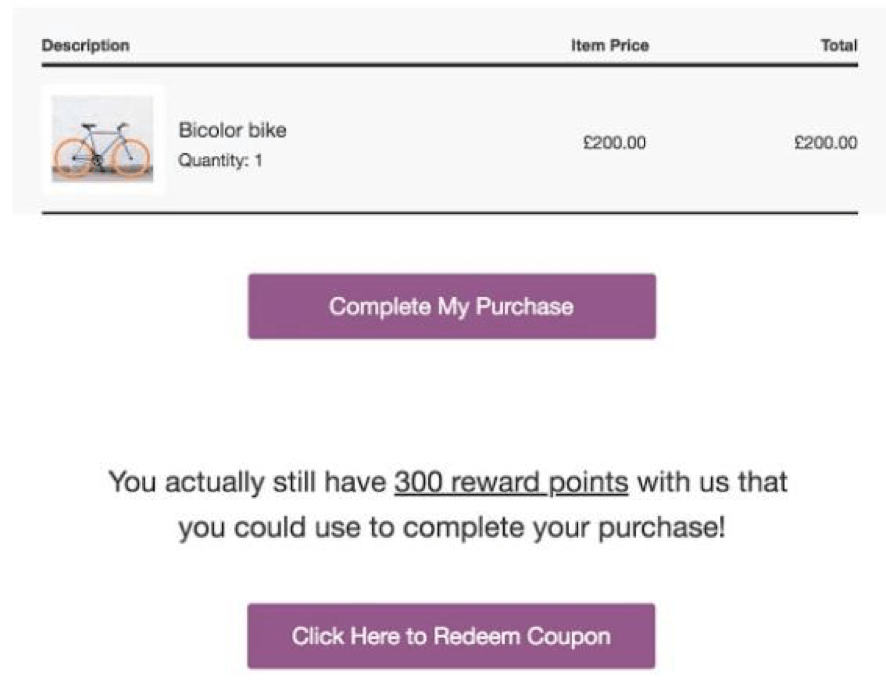
Abandoned Cart Series Tips
Let’s say you want to send a few emails to ensure that you successfully recover an abandoned cart. Here’s a model for a 3-email series:
- 1 hour after the cart is abandoned: Ask for feedback to figure out why they abandoned the cart. You can then use this feedback to improve their specific situation, as well as possibly make improvements to the whole shopping experience.
- 1 day: Include a discount or some other type of special incentive to draw them back in. Tell them this offer will expire in 3 days.
- 3 days: Remind them of the discount you sent as email #2, and that the discount will expire today.
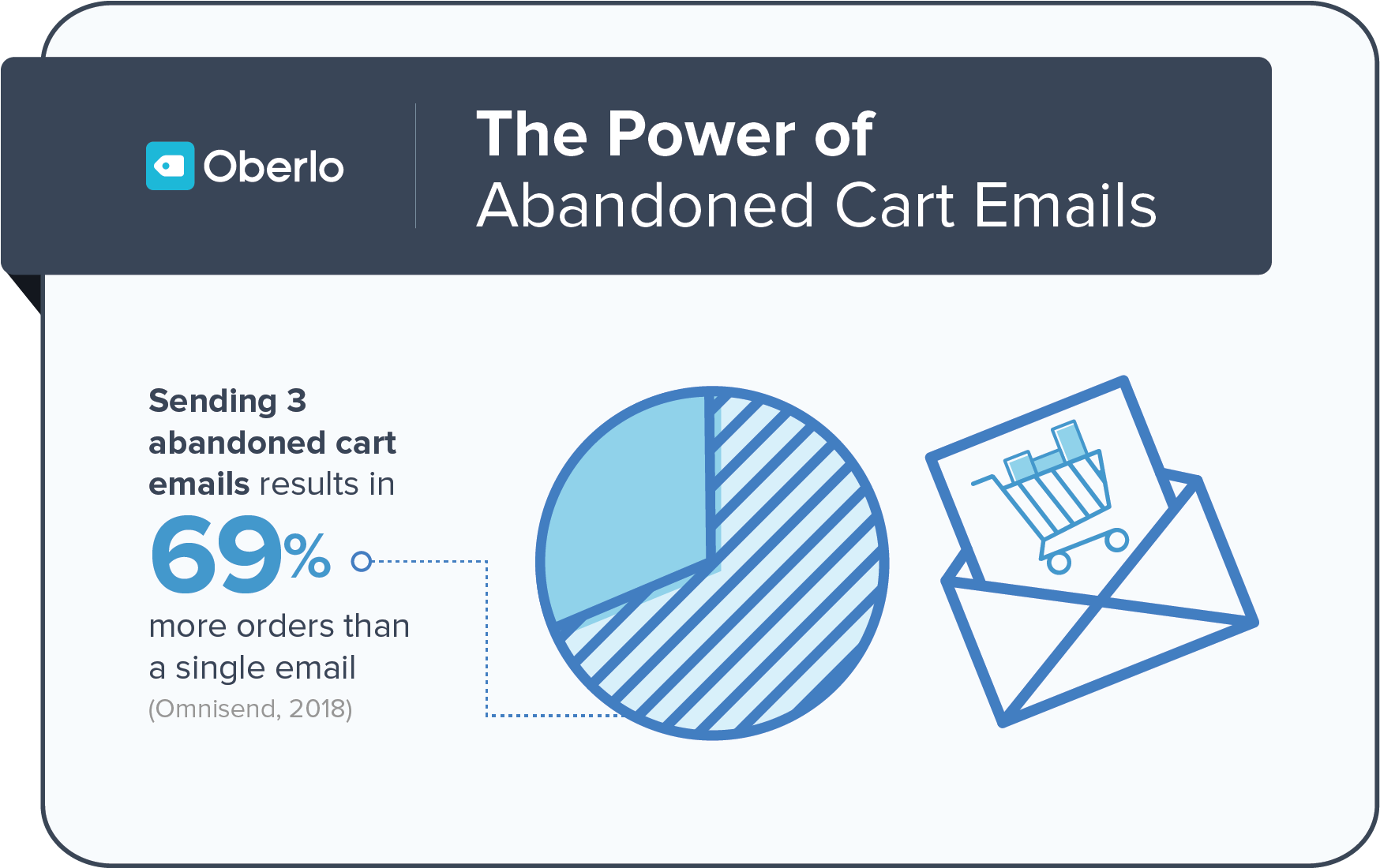
Customer Loyalty Emails
Like I said before, repeat customers are the best – and most profitable. A little bit of love goes a long way in building brand loyalty.
And interestingly enough, the customers who appreciate this “little bit of love” are the ones who are the most loyal. One study shows that customers who value personalized experiences are 10 times more likely to be top revenue-generators, making up to 15 transactions per year.
The moral of the story is: love them and they shall love you back.
To do this, use email to build and promote a customer loyalty program (also called a customer retention program) that rewards and shows appreciation for frequent shoppers.
Some ways to do this include:
- Sending them special VIP discounts, offers, and promotions
- Celebrating them, like birthday and customer anniversary emails with special offers included
- If you have a rewards program, offering opportunities to get rewards points even if they haven’t made a purchase, like points for filling out a survey
- Incentivizing purchases, like offering a free gift with their 5th purchase (you can send this email shortly after their 4th purchase)
- Incentivizing referrals, like offering them a discount, points, or account credit when they refer friends and family
In this email marketing example from ModCloth, they send a simple $5 discount as a 1-year anniversary gift.
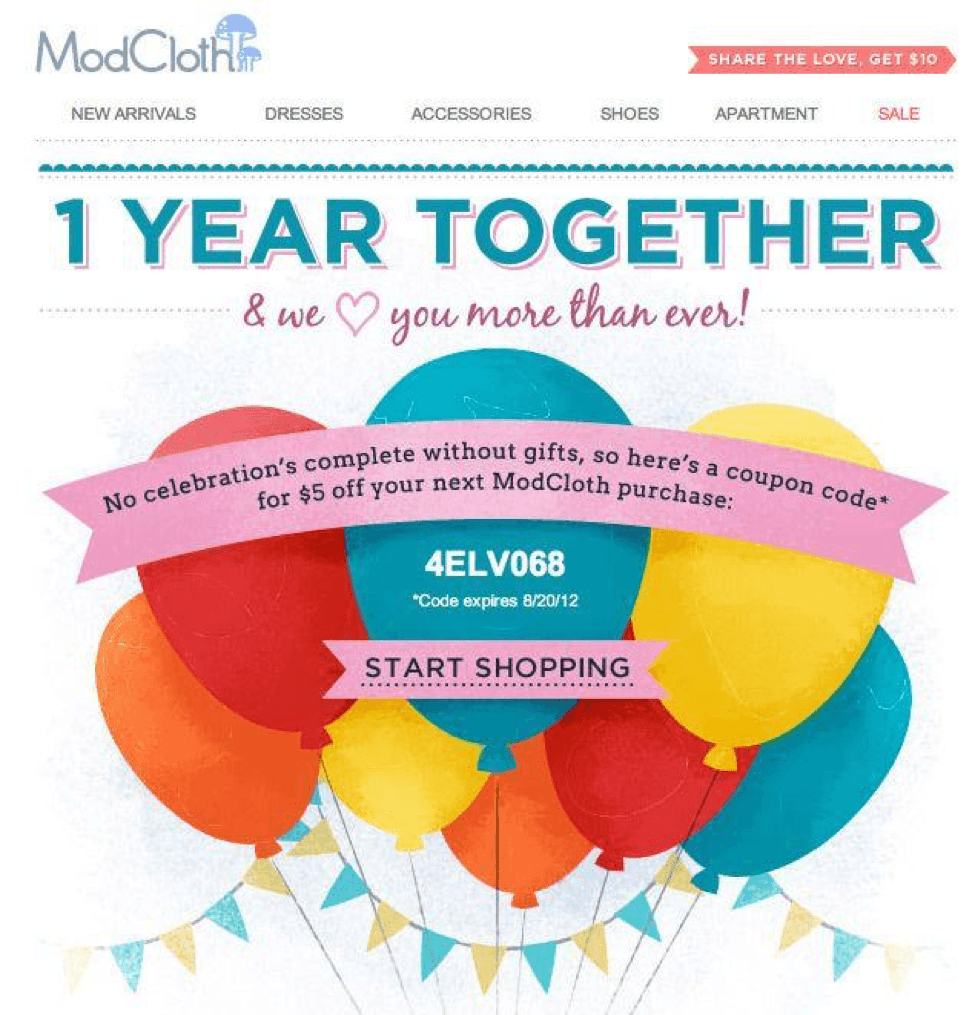
Win-Back Emails
Win-back emails are sent to lapsed customers, or customers who haven’t made a purchase in a while. The timeframe that defines a lapsed customer is up to you. Depending on the nature of your brand, this might be 1 month, 3 months, 6 months, or even more.
Some elements of a good win-back strategy include:
- Asking them for feedback to learn more about why they haven’t been around in a while (and if you do receive feedback, taking action to try and solve any problems ASAP)
- Remind them of the best features, offerings, and USPs of your brand
- Offer them a discount or other incentive to make another purchase
Data from MarketingLand showed that when participants offered a dollar-off discount, it performed 2x better than offering a percentage-off discount.
Crocs does this by offering $10 off the customer’s next purchase of $50.
Asana’s email marketing example sends a win-back email that promotes recent changes to the platform as a method to lure the customer back in.
Win-Back Series Tips

Here’s a model and timeline for a win-back series that’s carried out in 3 emails:
- The day the customer becomes inactive: Offer a small discount or other incentive for them to make another purchase. Show emotion, tell them you miss them!
- 1 week: Remind them of the discount you sent a week ago, and offer them some personalized recommendations based on their past purchases. If they had an abandoned cart, you can use that too.
- 2 weeks: Increase your discount amount to show them that you’re dying a little inside without them in your life. Create a sense of urgency, too – tell them the offer will expire in 24 or 48 hours.
Promotional and Informational Emails
As opposed to the emails above, promotional and informational emails aren’t as closely related to a user’s actions. So in many cases, they’re not considered triggered emails.
They typically fall into the “newsletter” category, so they can still be incorporated into an automated campaign for people who’ve signed up to your newsletter. (If you haven’t caught this by now, I encourage you to incorporate every email you send into an automated campaign.)
These emails are geared at educating and informing recipients, no matter where they are in their lifecycle or what kind of engagement they’ve recently had with your site. They can cover a broad range of topics, like:
- A general sale or discount you’re offering to everyone on your list
- New content you’ve created, like blog posts, ebooks, videos, infographics, etc.
- Periodic round-up or “digest” of your content, on a weekly, monthly, or yearly basis
- Special events you’re hosting or involved in, including sponsorships
- New offerings or added features to your existing products or services
- Interesting and newsworthy changes within your company, like programs or initiatives
- “Behind-the-scenes” content to show personality and build a stronger relationship
This fun email marketing example from Tattly celebrates its 5-year anniversary in a personal way, sharing an interview with the company’s founder. The photo is a great touch.
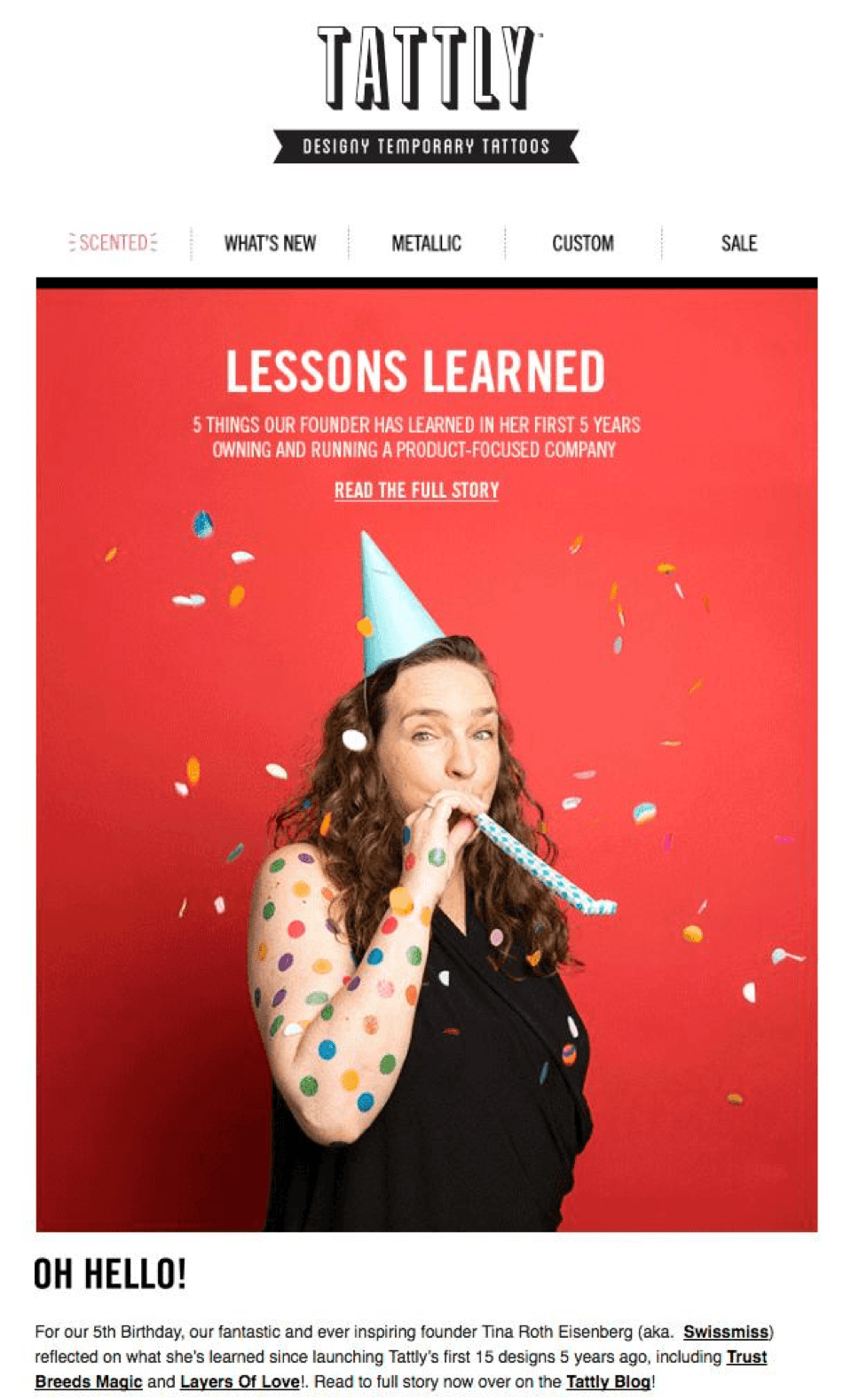
Ecommerce Starter Campaign: Post-Purchase Series
A post-purchase series is a good full campaign to start with as you explore the nooks and crannies of email marketing automation. This is because it’s a generalized marketing strategy that can apply to anyone who has made a purchase (though you’ll still want to personalize certain details, like the item(s) you offer as a cross-sell).
This series puts several different email types and effective email marketing tips into practice, giving you some well-rounded experience. You’ll also collect some solid performance data to measure, analyze, and apply to future strategies.
Here’s an example of post-purchase series that lasts 4 weeks and includes 6 emails:
-
- Immediately after purchase: Confirmation and purchase receipt. This is a standard transactional email to confirm their order. Adding a discount to the receipt email can be massively successful, so consider this too. Set the expiration of the discount anywhere up to 2 weeks.
- 3 days after purchase: Get feedback. If they bought a physical product, be sure they’ve received it in this window so you can ask them about their purchase and delivery experience. Are they unhappy? Learn why and try to make them happy again. Are they happy? Use that data for a testimonial!
- 1–2 weeks: Product reviews. Send this one after they’ve had enough time to actually start using the product or service they bought. Direct them to a dedicated web page where they can review the product.
- 1 day before discount expiry (2 weeks): Discount reminder. If you offered them a discount in their purchase receipt email, remind them that they’ve only got 24 hours left to use it.
- 2–3 weeks: Cross-sell. Send 1–3 personalized product recommendations based on their purchase.
- 4 weeks: Loyalty. If they’ve made another purchase, send a loyalty email, like offering an added discount for referring a new customer.
Conclusion
With so many opportunities to reach your customers with different kinds of messages (and for a very low cost), email is a marketing channel that shouldn’t be skipped over.
And with your collection of automation campaigns set up you’ll be able to sit back and let the system do its thing. So now that you know what it takes to create great email content, including how to craft a killer subject line, and have seen some examples of best-in-class email marekting campaigns, it’s time to do it yourself.



Table of Contents
Chapter 1: Email Marketing Strategy Basics: Everything You Need To Know
Chapter 2: Email Marketing KPIs: Which Metrics Matter?
Chapter 3: Anatomy of a Killer Email: 18 Email Marketing Examples To Copy
Chapter 4: 16 Email Marketing Tools To Craft and Send Perfect Emails
Chapter 5: 20 of the Best Newsletter Examples to Learn From

